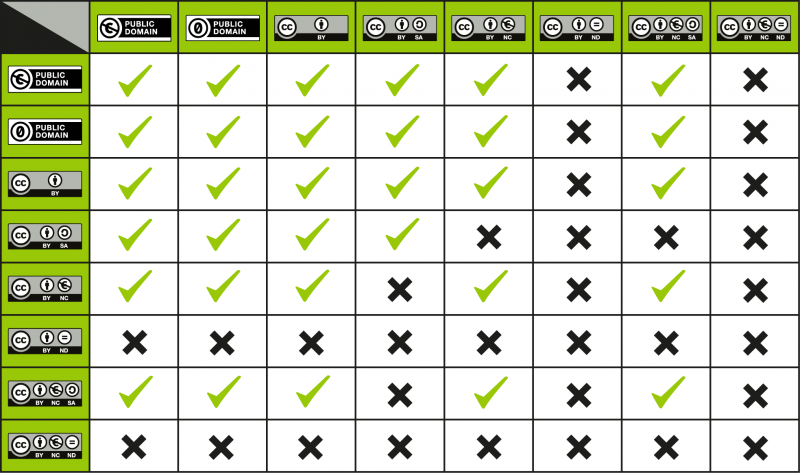Uncommonly Creative: Using Creative Commons
Creative Commons (CC) is an American non-profit that is devoted to expanding the range of creative works available for others to legally share and build upon. Basically, it lets creators licence their material. That way the creators of the material have control over their work and there is not third party involvement.
CC offers a good option outside of stock photos and original content—and manages to do the best of both. The content is unique and (usually) high quality. It is less expensive than original work, yet retains the ease of using stock photos. However, CC is not the same as public domain. Some work licenced under CC can’t be modified or used for commercial purposes. You should always check the licensing of the material prior to use.

According to SmallBusiness.com, Creative Commons offers six main licences.
Attribution-NonCommercial-NoDerivs
[CC BY-NC-ND]
This licence is the most restrictive of Creative Common’s six main licences, only allowing others to download the works and share them with others as long as they credit the owner, but they can’t change them in any way or use them commercially.
Attribution-NonCommercial
[CC BY-NC]
This licence lets others remix, tweak, and build upon your work non-commercially, and although their new works must also acknowledge you and be non-commercial, they don’t have to licence their derivative works on the same terms.
Attribution-ShareAlike
[CC BY-SA]
This licence lets others remix, tweak, and build upon your work even for commercial purposes, as long as they credit you and licence their new creations under the identical terms. This licence is often compared to “copyleft” free and open source software licences. All new works based on yours will carry the same license, so any derivatives will also allow commercial use. This is the licence used by Wikipedia, and is recommended for materials that would benefit from incorporating content from Wikipedia and similarly licenced projects.
Attribution-NonCommercial-ShareAlike
[CC BY-NC-SA]
This licecse lets others remix, tweak, and build upon your work non-commercially, as long as they credit you and license their new creations under the identical terms.
Attribution-NoDerivs
[CC BY-ND]
This licence allows for redistribution, commercial and non-commercial, as long as it is passed along unchanged and in whole, with credit to you.
Attribution
[CC BY]
This licence lets others distribute, remix, tweak, and build upon your work, even commercially, as long as they credit you for the original creation. This is the most accommodating of licences offered. Recommended for maximum dissemination and use of licenced materials.
CC is a great mediator between stock photography and original content. Keep in mind that while some independent stock photography is CC, not all CC is stock photography. The content can range from poems to sculptures to logos.
Here are some examples of the different licence uses:
- CC0 Public Domain Deduction
- Europeana – Europe’s digital library
- CC Attribution By
- PLOS – The Public Library of Science
- CC Attribution-ShareAlike
- Wikipedia and Wikimedia Commons – Online encyclopedia
- CC Attribution-NoDerivs
- Drupal Security Report – free and open source software package
- CC Attribution-NonCommercial
- CC Attribution-NonCommercial-ShareAlike
- MIT Open CourseWare – free, online videos and content from lecture
- CC Attribution-NonCommercial-NoDerivs
- TED Talks videos – videos of the popular TED Talks program
Creative Commons Ireland works with the School of Law, University College Cork, and ensures that the licencees comply with Irish law as well as American law.
Creative Commons lets your business be unique without blowing the budget.
